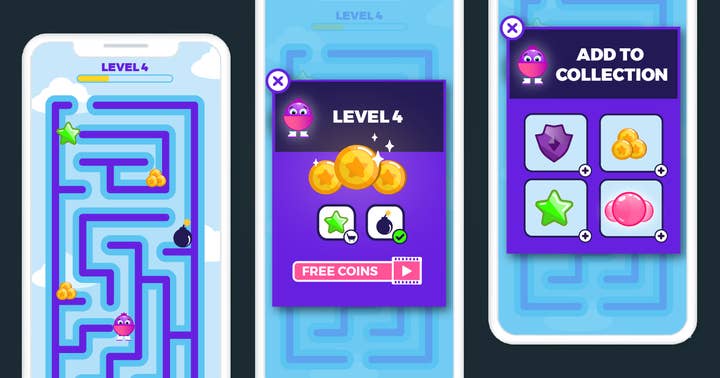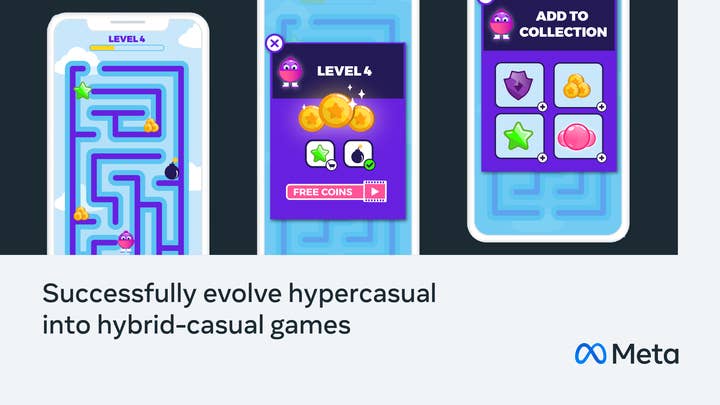Successfully evolve hypercasual into hybrid-casual games
Meta Audience Network on the opportunities of merging casual games with mid-core
The hypercasual game genre is both growing and evolving.
Gamers are naturally attracted to the accessibility of traditional hypercasual games, which have an easy-to-understand core gameplay loop and simple tap or swipe controls.
Hypercasual growth is impressive - leading game downloads in 2021 with a 46% year-on-year increase over other genres (Source: App Annie, The State of Mobile Gaming 2022). Yet as the market matures and gamers have more choice, developers are looking for new ways to increase player retention, engagement and revenue.
The opportunity? A new style of play that blends casual core gameplay and midcore game features for a more deeply engaging game. Enter hybrid-casual games.
At Meta, we see many of our hypercasual partners move toward hybrid-casual. Developers are interested in the genre's wide reach, easy-to-play game mechanics, and the ability to monetize like hypercasual and midcore games. Let's dive into the new genre further.

What are hybrid-casual games?
Hybrid-casual is a relatively new style of mobile game that incorporates the simplicity of hypercasual gameplay with more sophisticated progression mechanics that also appeal to mid-core audiences.
Hybrid-casual mixes a variety of different elements from hypercasual, such as design and production, additional gameplay content, balanced monetization best practices and live operation activities.
Why should you evolve to hybrid-casual?
Many developers are making a transition to hybrid-casual to have the wide audience of a casual game, as well as the retention of a midcore game, while monetizing like both.
For a hybrid-casual game, the midcore-like progressions are built around a casual core gameplay and create a balanced game economy that incentivizes players to return. As well as this, by merging hypercasual with midcore features, developers can enable different options for monetization. For example, fast-paced gameplay lends well to in-app ads (IAA) during a break, while in-app purchases (IAP) appeal to players' desire for progression.
How do you build a hybrid-casual game?
"Many developers are making a transition to hybrid-casual to have the wide audience of casual games, and the retention of a midcore game"
For IAP games, you will need to build monetization solutions that take into account that some players will spend repeatedly and deeply. However, there are some foundations that you can put in place, such as a balanced game economy and progression vectors.
Build a balanced game economy
For hybrid-casual games, developing a balanced, well-designed economy is the foundation on which to build IAP monetization. There are two core concepts for publishers to leverage for IAP: taps and sinks.
A tap is the point from which a resource is given - either via a game mechanic or an IAP. And a sink is the place where these resources are spent. Balancing the rate at which taps supply and sinks remove resources is essential for strong monetization. Developers look to strike the right level of supply so that players become concerned about scarcity, and there's a greater level of demand for resources.
Add progression vectors
Hybrid-casual publishers are moving away from needing players to improve their skill to make progress, and instead are designing game mechanics that enable progression. Progression vectors are a key reason for players to play - and keep playing - and are essential for long-term retention. There are many forms of progression vectors with most games offering more than one, and they can be a key motivation for players to spend.
Learn how to maximize your mobile game revenue by reading more in our guide: Winning with In-app Ad Monetization: Success Factors for Hypercasual and Casual Games. In this useful guide, we've pulled together a number of trends, proven techniques, and examples from other mobile game studios.
